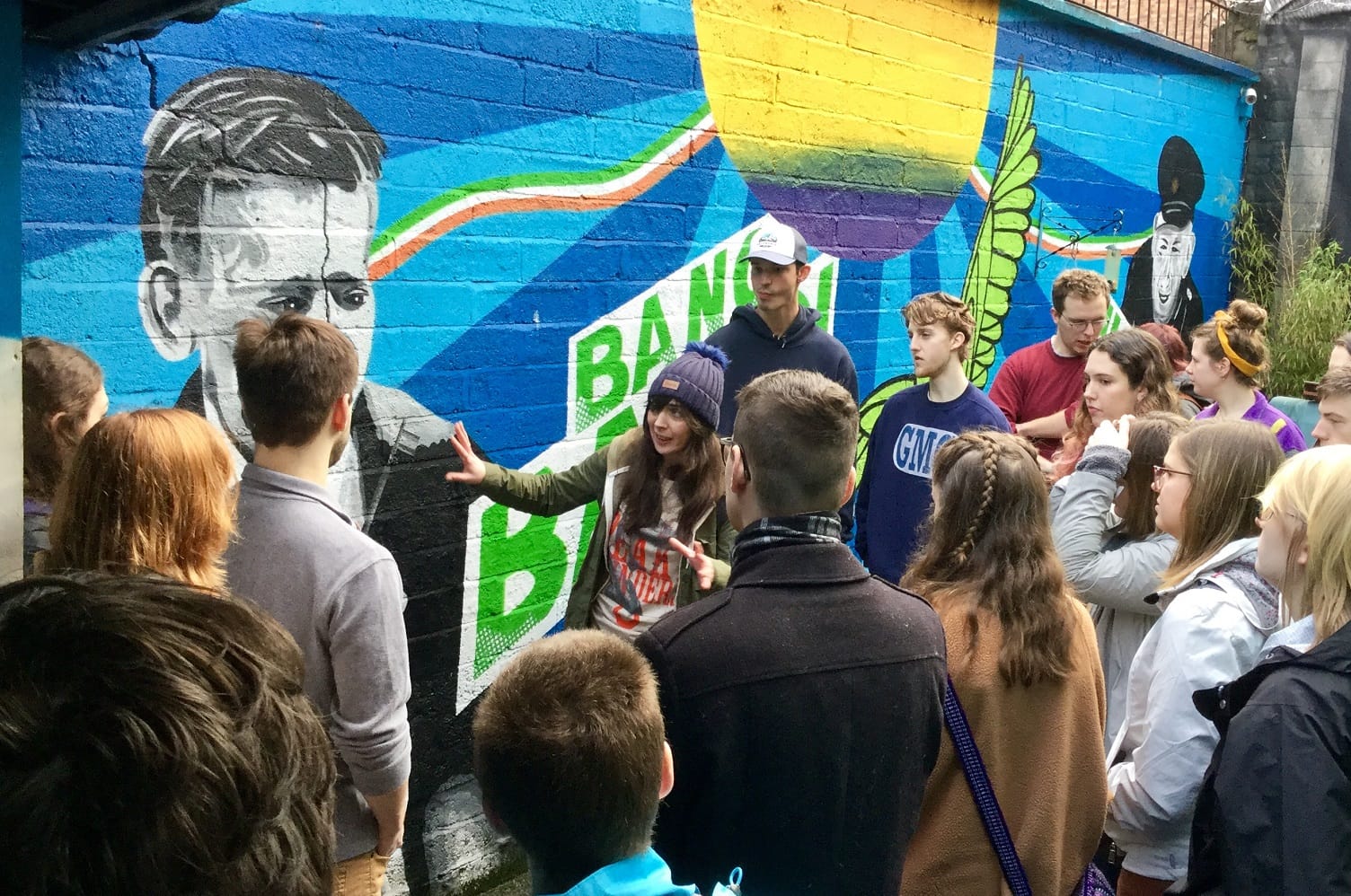What’s the best way to tell area residents about plans for a new asylum shelter nearby?
The government should tell communities directly about plans for new asylum shelters, some activists and politicians say.
Buildings on Merchants Quay and Bridgefoot Street would be transformed into artists’ studios, with community and rehearsal space – if it happens.

When the Liberties Cultural Association organised an on-street theatre event, the actors had to change in a local pub, says James Madigan.
And throughout the dense neighbourhood, there is no community indoor space for children to learn new activities or practice creative arts, he says. “The local kids, dance, acting, majorettes – they have no venue.”
If children and young people don’t have access to rehearsal spaces and creative classes, they cannot become artists, says Madigan. “There will be no more Imelda Mays.”
Last month though, Dublin City Council published a report outlining the idea of a Liberties Creative Campus.
Buildings on Merchants Quay and Bridgefoot Street could be transformed into artists’ studios, with community and rehearsal space – if it happens.
“There has always been something cool and edgy about the Liberties,” says Madigan “The idea of artists’ work space and a cultural centre … we would all be completely in favour of it.”
Not long ago, the Liberties Cultural Association put on a photography exhibition, called “50 Francis Street”, says Madigan.
The group has no exhibition space so it commandeered a room in a local community diner, the Little Flower Centre, for a weekend, he says.
They had to take the exhibition down again, though, by the Monday so staff could get back to serving meals.
Locals welcome any move to rectify the lack of community and creative space in the area, says Madigan.
Artists’ studios would be very welcome too. “Everyone is hugely supportive and we are optimistic,” says Madigan.
Major new developments in the Liberties haven’t included community facilities, he says.
Ray Yeates, the city arts officer, says the council surveyed artists, community groups and other organisations during its “co-design consultation process”.
The idea of the “co-design” is to get future users of a building involved in designing it.
“A lot of buildings are not fit for purpose because building users were not involved at the beginning,” says Yeates.

Turley, a planning consultancy, surveyed 538 people, including artists, representatives of arts organisations, and others for the council, according to the consultation report.
“There is a real deficit of artists’ work spaces,” says Yeates. Forty-one percent of the artists who responded were looking for studio space.
As well as cultural and artistic spaces, the community needs places for meetings, employment workshops, social programmes, and evening classes, the feedback said.
Madigan says his organisation needs a room with a projector to give talks.
Respondents to the survey said that the spaces should be inclusive, accessible, affordable, flexible and have natural light.
The council also ran meetings with local groups in December. “The level of community engagement that is going on at the moment is unprecedented,” says Madigan.
There have been plans in the past that didn’t come to fruition, but Dublin City Council appears to be really listening, he says. “It’s hugely positive, they are saying the right things.”
The council has identified two sites close to each other that could become the Liberties Creative Campus, says Yeates.
It is doing a feasibility study on a site in Bridgefoot Street, opposite where the new park is going to be, he says.
That new premises could house artists’ work spaces on the third and fourth floors, shared rehearsal spaces on the second floor and a cafe downstairs, he says.
Nearby at 8 and 9 Merchants Quay, the buildings are council-owned and have huge potential, says Yeates.
“Number 8 still has inside it the old St Anthony’s Theatre,” he says, which was once used for pantomimes and could become a community arts space.
Number 9 Merchants Quay “is a fully restored 18th-century building”, he says.
Dublin City Council spent €2.1 million to restore 9 Merchants Quay, said a council spokesperson.
It started work in 1998 and discovered the remains of a medieval slipway. The house also “has excellent neoclassical plasterwork and a fine staircase”, they said.
The decorative plasterwork on the first floor dates from around the 1780s and “is thought to possibly be the work of celebrated stuccodore Michael Stapleton or his studio”, says the spokesperson.

Plans for the creative campus are not yet written in stone, though, and no money has been secured for the project yet, says Yeates. “It’s a bit, at the moment, of an aspiration.”
The council has applied for regeneration money from the EU, he says, and will also apply to the next round of the Irish government’s Urban Regeneration and Development Fund.
Madigan wonders if there are other options for locations more central in the Liberties.
Maybe a building around Meath Street would be better to connect in with Newmarket and the Tenters and bring the whole area together, he says. “To me the entire Liberties is the creative campus.”
Get our latest headlines in one of them, and recommendations for things to do in Dublin in the other.